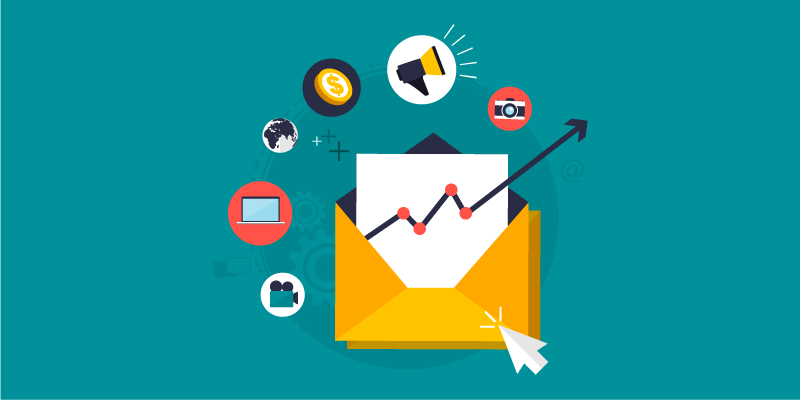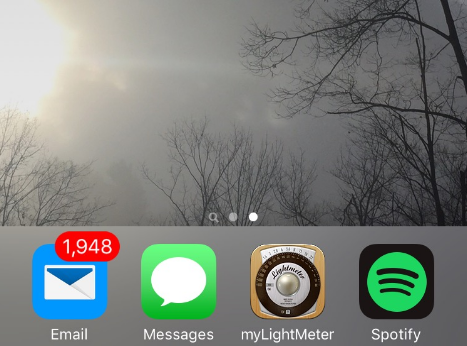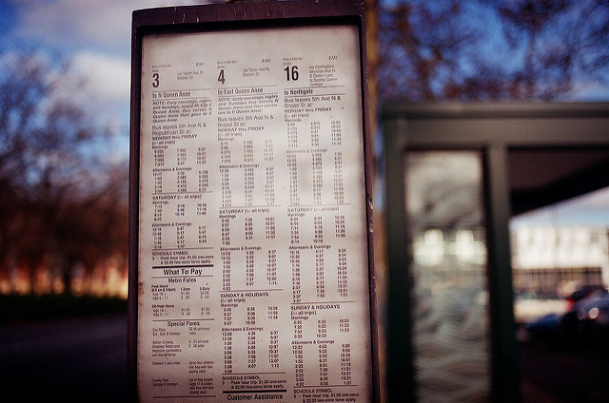
In a time when mobile apps make it possible for businesses to reach customers directly and instantly, email marketing might just seem a little quaint. Maybe it is, but that doesn’t make it irrelevant. In some ways, a well crafted email campaign offers businesses a chance to connect with their subscribers in ways that can’t be done with a tweet or a Facebook status update. There’s something a bit more personal about email, even if most inboxes are just filled with billing statements, autopay confirmations, and dozens of other newsletters that sit boldfaced for weeks. They’re zombie emails: the unread. Do things poorly, and your marketing campaign will join them. But do things right, and you’ll have—well, whatever the opposite of a zombie is. I’m not really into zombies, to be honest.

Terrible analogies aside, email marketing has the potential to make a real impact on your audience. That’s because your audience consists of people who have opted in, voluntarily. (Side note: “voluntarily” is the key here. If you’re sending unsolicited emails, that’s called spam and people will curse your name in perpetuity because of it) This all means that your audience consists of people who want to hear from you. That’s an enviable place to start. You’ve already got their attention; now all you need to do is sustain it. Easy, right? Well, no. Not exactly. But the good news is, unless you’re sending out a newsletter on rocket science, this isn’t exactly rocket science. No single strategy or idea is likely to pay off immediately, let alone without revision. Your email marketing campaign will have to grow into a success, organically, and that means there’s going to be some trial and error to your early attempts. You can then fine tune your approach with some good reporting—but I’m getting ahead of myself. Before any of that can happen, you still need to define what kind of content you’re going to provide. Which brings me to step one.
Step One: Define What Kind of Content You’re Going to Provide
Your first step in this process is to actually categorize the content—don’t worry about topics or specifics. It’s good to define at least three types of content you’d want to send out as part of an email, like News, Offers, and General Outreach. There’s no real limit to how many categories you can make, and the more you have the more likely you are to not run out of content on a regular basis. But try and keep each email to no more than five of them at a time. Yes, your audience wants to hear from you, but don’t be presumptuous about it.
Importance of Personalization in Email Marketing
Personalization can significantly enhance your email marketing effectiveness. By including a subscriber’s name or referencing past interactions, you forge a more personal connection with your audience. Studies show that personalized emails can increase open rates by 26%. Beyond names, consider tailoring content based on user preferences or past purchases. This kind of customization can transform a generic email into a meaningful interaction, fostering brand loyalty.
Step Two: Create a Voice and Write the Content
Your written voice is the heart of any letter, whether it’s a birthday card that’s been sent by post or an email sent out to thousands of customers. The voice has to match your brand. If you’re an accounting firm sending out a tax-time themed newsletter, you definitely don’t want to start off with something like “Whassup, my Bro-heems???” You also don’t want to be too formal or stuffy. And a little humor never hurt anyone—just keep it all in the bounds of the image you’re trying to create. You probably won’t nail the voice on the first try, but as you go one will naturally emerge. If writing isn’t your thing, get someone to do it for you. The writer needs to enjoy composing it as much as you want your readers to enjoy reading it. The writer may also want to get paid for it, and that’s a worthy investment if she’s going to do a better job of it than you could.
Importance of Mobile Optimization
With over 50% of emails being opened on mobile devices, optimizing your emails for smaller screens is crucial. Ensure your emails use a responsive design that adjusts to different screen sizes, simplifying navigation and readability. Using single-column layouts and prominent call-to-action buttons can significantly enhance the user experience. Readers should easily interact with your content, no matter where they are accessing it from.

Even if you commit to a once-a-month schedule, your audience isn’t going to care much if you’ve got nothing to say. Your email needs to benefit the reader in some way. That could be as simple as basic entertainment, or some kind of reward or discount for having read it. Without that, a schedule just serves as a daily (or weekly, or monthly) reminder to your audience that they keep meaning to unsubscribe from your list.
Step Four: Create a Sense of Exclusivity
This is the best way to incentivise your readers to stay tuned and never miss an update from you. Your email subscribers could gain exclusive early access to certain products, or be given coupon codes for online orders. People who signed up to receive updates and newsletters are different than the customers who just show up and browse for the occasionally purchase. Treat them that way.
Step Five: Obsess Over Metrics
You could just keep a master list of your customers’ email addresses and send them out updates from your mail client and call that email marketing. Or you can spend a little extra cash and use an email marketing service to create something that’s attractive, easy to read, and easier to track. Services like MailChimp or Constant Contact offer pretty comprehensive performance analytics for your mail campaigns. You can monitor how many people actually opened the email or whether embedded links were clicked through to the web for more information. The ones with the highest click through rate are the kinds of content you’ll want to include more of in the future. Find out who’s most likely to buy something after reading and clicking through. You can look at unsubscribe rates after emails are sent, as a way to know what turns people off. If, after every email, one or two people opt out, that’s probably nothing unusual. But if you send an email and all of a sudden people are dropping out like crazy, you’ll know it was a bad idea to send out that celebratory GO-TRUMP coupon code.
A/B Testing for Email Campaigns
A/B testing is a powerful tool in email marketing, allowing you to experiment with different elements of your campaigns to see which performs better. You might test subject lines, email formats, or call-to-action placements. One group might receive an email with a straightforward subject line, while another sees something more creative. Analysing which version yields higher engagement rates can inform future campaigns, ensuring you’re consistently using the most effective strategies.

Remember, an email marketing campaign has to achieve two things. It has to be engaging for your customers, and there has to be some kind of return on your time and effort in creating it. Without those two results, you’re just writing letters to yourself—and you probably aren’t reading them, either.
Regulatory Compliance and Privacy Considerations
Navigating the landscape of email marketing requires understanding the laws that govern it, like GDPR and CAN-SPAM. These regulations ensure that the privacy and rights of email recipients are respected. Always obtain clear consent before sending emails, provide an easy way to unsubscribe, and protect user data diligently. Compliance not only avoids legal trouble but also builds trust with your audience, showing that you respect their privacy and choices.
Of course, email isn’t the only way you can promote your business online. For more ways to get your small business’s digital marketing up to scratch, check out this list of 31 essential digital marketing tactics!
Last Updated on January 31, 2025 by Ian Naylor
2 thoughts on “The Basics of Successful Email Marketing”